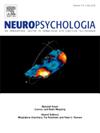How negative emotions influence arithmetic problem-solving processes: An ERP study
IF 2
3区 心理学
Q3 BEHAVIORAL SCIENCES
引用次数: 0
Abstract
We investigated the effects of negative emotions on arithmetic performance using ERPs. Participants were asked to verify complex multiplication problems that were either true (e.g., 3 × 23 = 69) or false (e.g., 5 × 98 = 485). Half the problems were five problems (e.g., 5 × 94 = 470) and half were non-five problems (e.g., 8 × 63 = 504). False five problems violated arithmetic rules (i.e., the five rule, e.g., 5 × 17 = 87, the parity-rule, e.g., 86 × 5 = 435, both the five- and parity-rules, e.g., 5 × 42 = 411) or no arithmetic rules (e.g., 13 × 5 = 45). Problems were displayed superimposed on emotionally neutral or negative pictures. Behavioral results showed that negative emotions (a) did not affect participants’ performance on true five and non-five problems, (b) influenced arithmetic performance on false five problems, and (c) impaired performance on problems that violated both the five- and parity-rules but improved performance on false five problems violating no arithmetic rules. Electrophysiological data revealed that negative emotions led to (a) earlier P1 peak when participants verified true, non-five problems, (b) lower P300 and P600 amplitudes in central brain regions when participants verified false five problems that violated no-rule, (c) earlier N2 peak latencies in central brain regions and larger LPC amplitudes in right parietal regions while participants verified parity-rule violation problems, and (d) earlier N2 peak latencies in central brain regions and later N2 peak latencies in the right prefrontal brain regions while participants verified false, five problems violating both the five- and parity-rules. These findings demonstrate that negative emotions significantly alter key stages of arithmetic problem-solving by modulating neural activity related to encoding, detection of rule violations, and strategic execution, as evidenced by changes in the amplitude and latency of ERP components such as P1, N2, P300, P600, and LPC.
负性情绪如何影响算术解题过程:一项ERP研究。
我们利用erp研究了消极情绪对算术成绩的影响。参与者被要求验证复杂的乘法问题,要么是正确的(例如,3 × 23 = 69),要么是错误的(例如,5 × 98 = 485)。一半的问题是五个问题(例如,5 × 94 = 470),一半是非五个问题(例如,8 × 63 = 504)。假五题违反算术规则(即,五规则,例如,5 × 17 = 87,奇偶规则,例如,86 × 5 = 435,五和奇偶规则,例如,5 × 42 = 411)或没有算术规则(例如,13 × 5 = 45)。问题被叠加在情绪中立或消极的图片上。行为结果表明,消极情绪(a)不影响参与者在真五和非五问题上的表现,(b)影响假五问题的算术表现,(c)在违反五和奇偶规则的问题上的表现受损,但在不违反算术规则的假五问题上的表现有所提高。电生理数据显示,消极情绪导致(a)被试在验证真、非五题时P1峰提前;(b)被试在验证假、非五题时中脑区P300和P600波幅降低;(c)被试在验证违反偶规则问题时中脑区N2峰潜伏期提前,右顶叶区LPC波幅增大。(d)当被试验证了5个同时违反5规则和奇偶规则的错误问题时,中脑区域的N2峰潜伏期较早,右前额叶区域的N2峰潜伏期较晚。研究结果表明,负性情绪通过调节与编码、违规行为检测和策略执行相关的神经活动,显著改变了算术问题解决的关键阶段,这可以从ERP成分(P1、N2、P300、P600和LPC)的振幅和潜伏期变化中得到证明。
本文章由计算机程序翻译,如有差异,请以英文原文为准。
求助全文
约1分钟内获得全文
求助全文
来源期刊

Neuropsychologia
医学-行为科学
CiteScore
5.10
自引率
3.80%
发文量
228
审稿时长
4 months
期刊介绍:
Neuropsychologia is an international interdisciplinary journal devoted to experimental and theoretical contributions that advance understanding of human cognition and behavior from a neuroscience perspective. The journal will consider for publication studies that link brain function with cognitive processes, including attention and awareness, action and motor control, executive functions and cognitive control, memory, language, and emotion and social cognition.
 求助内容:
求助内容: 应助结果提醒方式:
应助结果提醒方式:


